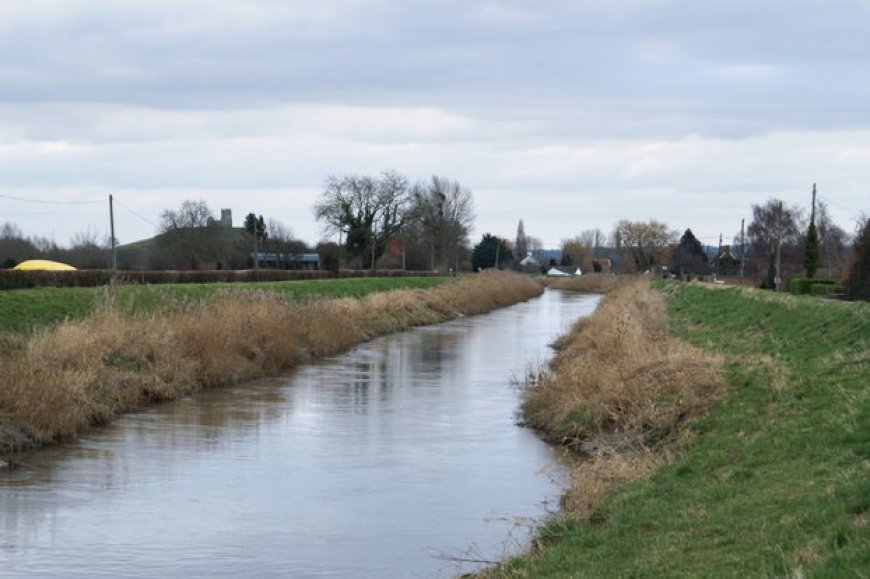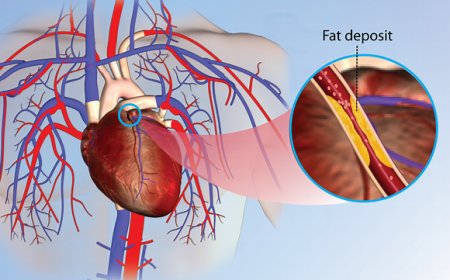The River Parrett flows through the counties of Dorset.
The River Parrett flows through the counties of Dorset and Somerset in South West England, from its source in the Thorney Mills springs in the hills around Chedington in Dorset. Flowing northwest through Somerset and the Somerset Levels to its mouth at Burnham-on-Sea, into the Bridgwater Bay nature reserve on the Bristol Channel, the Parrett and its tributaries drain an area of 660 square miles (1,700 km2) – about 50 per cent of Somerset's land area, with a population of 300,000.

The River Parrett flows through the counties of Dorset and Somerset in South West England, from its source in the Thorney Mills springs in the hills around Chedington in Dorset. Flowing northwest through Somerset and the Somerset Levels to its mouth at Burnham-on-Sea, into the Bridgwater Bay nature reserve on the Bristol Channel, the Parrett and its tributaries drain an area of 660 square miles (1,700 km2) – about 50 per cent of Somerset's land area, with a population of 300,000.
The Parrett's main tributaries include the Rivers Tone, Isle, and Yeo, and the River Cary via the King's Sedgemoor Drain. The 37-mile (60 km) long river is tidal for 19 miles (31 km) up to Oath. The fall of the river between Langport and Bridgwater is only 1 foot per mile (0.2 m/km), so it is prone to frequent flooding in winter and during high tides. Many approaches have been tried since at least the medieval period to reduce the incidence and effect of floods and to drain the surrounding fields.
In Anglo-Saxon times the river formed a boundary between Wessex and Dumnonia. It later served the Port of Bridgwater, and enabled cargoes to be transported inland. The arrival of the railways led to a decline in commercial shipping, and the only working docks are at Dunball. Human influence on the river has left a legacy of bridges and industrial artefacts. The Parrett along with its connected waterways and network of drains supports an ecosystem that includes several rare species of flora and fauna. The River Parrett Trail has been established along the banks of the river.
Course
The River Parrett is 37 miles (60 km) long, flowing roughly south to north from Dorset through Somerset. Its source is in the Thorney Mills springs in the hills around Chedington, 2.5 miles (4 km) from that of the River Axe, in nearby Beaminster, which runs in the opposite direction to the English Channel at Axmouth in Devon. The two rivers give their names to Parrett and Axe Parish Council.
From its source, the Parrett runs north through South Perrott and under the Salisbury to Exeter railway line before passing to the west of North Perrott and Haselbury Plucknett. It then runs through fields between Merriott to the west and West Chinnock and Chiselborough to the east. Passing under the A303 road to the east of South Petherton, the river flows between East Lambrook and Bower Hinton west of Martock and then towards Kingsbury Episcopi, through Thorney and Muchelney, passing the remains of Muchelney Abbey before entering Langport, which is about 10 miles (16 km) north of Chiselborough. Below Thorney Bridge the river's banks have been raised to mitigate flooding.
The Parrett then flows northwest for approximately another 10 miles (16 km) to Bridgwater through the Somerset Levels past Aller, close to the Aller and Beer Woods and Aller Hill biological Sites of Special Scientific Interest (SSSI). The sluice gate (formerly a lock built in the late 1830s) at the deserted medieval village of Oath marks the river's tidal limit. The river then crosses Southlake Moor. The next major landmark along the river's course is Burrow Mump, an ancient earthwork owned by the National Trust. The river then arrives in Burrowbridge, where the old pumping station building was once a museum. Flowing north, it passes Langmead and Weston Level SSSI,and on past the land-drainage pumping station at Westonzoyland.
Further downstream the river passes the village of Huntworth before flowing under the M5 motorway at Dunwear. As it enters Bridgwater it passes under Somerset and Hamp Bridges, and past Bridgwater Castle, which had a tidal moat up to 65 feet (20 m) wide in places, fed by water from the river. From Bridgwater to the sea is approximately 6 miles (9.7 km). The King's Sedgemoor Drain empties into the River Parrett next to the wharf at Dunball; it enters via a clyce (or clyse), which is a local word for a sluice. The clyce has been moved about 0.3 miles (500 m) downstream from its original position and now obstructs the entrance to the small harbour next to the wharf.
The Parrett then flows northwest for approximately another 10 miles (16 km) to Bridgwater through the Somerset Levels past Aller, close to the Aller and Beer Woods and Aller Hill biological Sites of Special Scientific Interest (SSSI). The sluice gate (formerly a lock built in the late 1830s) at the deserted medieval village of Oath marks the river's tidal limit.The river then crosses Southlake Moor. The next major landmark along the river's course is Burrow Mump, an ancient earthwork owned by the National Trust. The river then arrives in Burrowbridge, where the old pumping station building was once a museum. Flowing north, it passes Langmead and Weston Level SSSI, and on past the land-drainage pumping station at Westonzoyland.
Further downstream the river passes the village of Huntworth before flowing under the M5 motorway at Dunwear. As it enters Bridgwater it passes under Somerset and Hamp Bridges, and past Bridgwater Castle, which had a tidal moat up to 65 feet (20 m) wide in places, fed by water from the river. From Bridgwater to the sea is approximately 6 miles (9.7 km). The King's Sedgemoor Drain empties into the River Parrett next to the wharf at Dunball; it enters via a clyce (or clyse), which is a local word for a sluice. The clyce has been moved about 0.3 miles (500 m) downstream from its original position and now obstructs the entrance to the small harbour next to the wharf.
The course of the river below Bridgwater is now somewhat straighter than in former times. The village of Combwich lies adjacent to a channel in the river known as "Combwich Reach"; from here the Parrett flows to the Bristol Channel past the Steart Peninsula. Cartographic evidence indicates that in the early 18th century the peninsula was longer than at present. A "neck" started to form in the peninsula, and by 1802 the tip had broken off to form Stert Island.Fenning Island also broke away but has rejoined the peninsula.[ Much of the peninsula's northern end eroded away or now exists as "islands" visible at low tide within an intertidal area of mud known as the Stert Flats.
The mouth at Burnham-on-Sea is a nature reserve where the river flows into Bridgwater Bay on the Bristol Channel. In addition to the rivers Parrett, Brue and Washford, several of the man-made drainage ditches, including the River Huntspill from the Somerset Levels, and the Cannington Brook from the "Pawlett Hams", also discharge into the bay.
Flow and tidal bore
The Parrett has only one gauging station, at Chiselborough, fairly close to the source. It measures flow from the first 29 square miles (75 km2) of the drainage basin, or about 4.3 per cent of the total. The mean flow measured by the Environment Agency at Chiselborough was 42 cubic feet per second (1.19 m3/s), with a peak of 6,100 cubic feet per second (173 m3/s) on 30 May 1979 and a minimum of 2.5 cubic feet per second (0.07 m3/s) over a seven-day period in August 1976. Tributaries of the Parrett with gauging stations include the Yeo, Isle, Cary, and Tone.
The lower Parrett has a fall of only 1 foot per mile (0.2 m/km) between Langport and Bridgwater. To the northeast of the River Parrett's mouth, the Bristol Channel becomes the Severn Estuary, which has a tidal range of 14 metres (46 ft). The rate and direction of flow of the Parrett is therefore dependent on the state of the tide on the River Severn. In common with the lower reaches of the River Severn, the Parrett experiences a tidal bore. Certain combinations of the tides funnel the rising water into a wave that travels upstream at about 6 miles per hour (10 km/h), against the river's current.
Hydrology and water quality
Near the source at Chiselborough the typical level range for the depth of the river is 0.05 metres (2.0 in) to 0.63 metres (2 ft 1 in) but has reached a maximum of 2.93 metres (9 ft 7 in).The mean flow rate is 1.196 cubic metres per second (42.2 cu ft/s).By the time it reaches Gaw Bridge the normal level range is 0.23 metres (9.1 in) to 0.97 metres (3 ft 2 in) and a highest reading of 3.84 metres (12.6 ft). At West Quay in Bridgwater where the river is tidal the highest astronomical tide level is 8.63 metres (28.3 ft) above ordnance datum (AOD).
For the purpose of water quality measurement the river is divided into five water body areas by the Environment Agency. In 2015, both the area from the source to Broad River around Crewkerne and the area from Broad River to Lopen Brook are rated good for chemical quality and moderate for ecological quality. The area from Lopen Brook to the River Isle, around Martock and South Petherton, is rated good for chemical quality, poor for ecological quality and poor overall. From the River Isle to River Yeo around Muchelney, chemical quality is rated good, and ecology is rated moderate. The section around Langport to the West Sedgemoor Drain continues to rate good for chemical quality and moderate for ecological quality, as does the final area leading to Bridgwater Bay.
History
The origin of the name Parrett is unclear, but several derivations from the Celtic languages used in Wales have been suggested. Priestley-Evans suggests, "Parrett has been said to be a form of the Welsh pared, a partition, and that it was the name which the Welsh people of Somerset and Devon gave to that river because it was at one time the dividing line between themselves and the Saxons". Another spelling, parwydydd, is also translated as `partition'. Another explanation from Welsh, Peraidd, meaning the sweet or delicious river, has also been suggested. An alternative explanation, based on Celtic, is a derivation from Pedair or Pedride from pedr, meaning four and the Old Cornish Rit meaning `flow', which in this case would relate to the four flows or streams: the Tone, Yeo, Isle and Parrett.This is based on the explanation given in Ekwall's 1928 book English River-Names. Whichever derivation is correct, the name Parrett and its spelling variations have been in use since the Anglo-Saxon era, as evidenced by the addition of -tun onto river names as seen in the local towns North Petherton and South Petherton. The spelling Pedred and Pedrida are also mentioned in connection with the Parrett. The Oxford Dictionary of British Place-Names states only that the name is a 'pre-English river-name of obscure origin'.
Landscape:
The River Parrett, the Bristol Channel and the Severn Estuary are believed to have been used for riverine bulk transportation of people and supplies in Somerset under Roman and later Anglo-Saxon and Norman occupation. Roman Somerset, which lasted for over 250 years until around the beginning of the 5th century, had various settlements, including Bath (Aquae Sulis), Ilchester (Lindinis) and lead mines at Charterhouse; and four roads surrounding the Somerset Levels. There is evidence of two Roman ports on the Parrett. The port at Combwich, on the west bank, was ill-recorded before its destruction by quarrying and erosion. The other at Crandon Bridge on the east bank near where the current King's Sedgemoor Drain enters the Parrett, was in use between the first and the fourth centuries. Evidence of an extensive site with storehouses was found in the mid-1970s, during motorway construction works. The Crandon Bridge site may have been linked by a probable Roman road over the Polden Hills to the Fosse Way, at Ilchester. Ilchester, the largest Roman town in Somerset, was a port with large granaries, sited where the Fosse Way crossed the Ilchester Yeo by means of a paved ford.The Yeo was navigable by small craft all the way to the Parrett allowing military supplies to be brought by boat directly to Ilchester; however, disembarkation at Crandon Bridge and use of the Polden Hills roadway allowed more rapid movement to Ilchester. The Yeo may already have been straightened and canalised before Roman occupation.
The Parrett was established as the border between the Anglo-Saxon kingdom of Wessex and the Brythonic kingdom of Dumnonia in 658, following the Dumnonians' defeat at the Battle of Peonnum that year.This natural border endured for almost a century until further fighting between the Anglo-Saxons and Britons in the mid-8th century, when the border shifted west to its current location between the modern ceremonial counties of Somerset and Devon. It is thought a ford, usable only at low tide, crossed the river near its mouth, between Combwich and Pawlett (east bank). This crossing, at the western end of the Polden Hills, was known since Roman times and lay on the route of a Saxon herepath. It was here, or in the immediate vicinity, that Hubba, the Danish raider, was defeated and killed by Odda in 878. In the Domesday Book Combwich was known as Comich, which means "the settlement by the water", from the Old English cumb and wic. The ford was later replaced by a ferry, one of which was in operation from at least the 13th century. In the 15th century the ferry was regarded as part of the King's Highway, and both passengers and cattle were carried in the 16th and 17th centuries. Records of the joint Manorial ownership and costs of the ferry exist for 1589 and 1810. The White House Inn, a licensed victualler and part-owner of the ferry, traded on the Pawlett bank from 1655 to 1897; the building was retained as a farm dwelling for another 20 years. The Combwich river crossing, which was a main route until the 18th century, fell out of use due to turnpike trusts improving what were to become the A38 and A39 roads, and traffic went via Bridgwater; the former inn was demolished c. 1930.
After the departure of the Romans, the low-lying Somerset Levels appear to have been abandoned, as the archaeological record shows that they were flooded and the former Roman landscape covered with a thick layer of alluvial deposits. Recovery of the levels involved both the construction of sea walls and the containment of the Parrett. Celtic Christianity came to the remoter areas of the Somerset Levels, making use of "island" sites. Glastonbury Abbey, possibly founded in the 7th century (or earlier), was nearby and had undertaken extensive water management to enable it to bring materials by boat to Glastonbury, albeit not via the Parrett. Muchelney Abbey, founded in the mid-8th century, was sited at the confluence of the Parrett and its tributaries, the rivers Isle and Yeo; and Athelney Abbey lay on another tributary, the River Tone. These three abbeys together with the Bishop of Bath and Wells were major landowners with fishing and riparian rights, often conflicting, on these rivers. They gained financially from improvements to land and waterways due to the resulting greater fertility of their lands and the increased rents that they were able to charge their tenants.
Continuing land reclamation and control of the Parrett was a long-running cycle of neglect followed by improvement. Work was carried out on the upper River Parrett basin in the Middle Ages by Glastonbury Abbey. Abbot Michael's survey of 1234 showed 722 acres (292 ha) of meadow recovered around the "island" of Sowy; from the accounts in the Abbey's rent books, this had increased to 972 acres (393 ha) by 1240. Flooding of adjacent moor land was partially addressed in the 13th century by building a number of embankment walls to contain the Parrett. These included Southlake Wall, Burrow Wall and Lake Wall. The River Tone was also diverted by the Abbot of Athelney and other land owners into a new embanked channel, joining the Parrett upstream from its original confluence. After the dissolution of the monasteries in the 16th century, much of the former abbey lands came under the control of the Crown, particularly King's Sedgemoor, which had been wholly owned by Glastonbury Abbey, with Henry VI's Courts of Sewers made responsible for maintaining existing drainage and various Commissions made responsible for land improvements. Further reclamation work was carried out over the next 500 years. In 1597, 50 acres (20 ha) of land were recovered near the Parrett estuary; a few years later 140 acres (57 ha) near Pawlett were recovered by means of embankments; three further reclamations, totalling 110 acres (45 ha), were undertaken downstream of Bridgwater by 1660. Kings James I, Charles I, and Charles II continued to improve King's Sedgemoor.
Attempts were also made to improve navigation on the lower river. Between 1677 and 1678, Sir John Moulton cut a new channel at "Vikings Creek" on the Horsey Levels to remove a large meander; the old river bed soon silted up, providing 120 acres (49 ha) of new land. A further scheme was proposed in 1723 to improve navigation, shorten the journey time for boats, and recover land by obtaining an Act of Parliament to make an artificial cut across the Steart Peninsula. Eventually, after much debate, the cut was not made due to lack of land owner support and concerns over costs and risks. The English Civil War put a stop to most reclamation work; however, in 1764 a clyse was built at Dunball to contain tidal influences on a run-off stream near King's Sedgemoor. Extensive land recovery was undertaken in the Somerset Levels by land owners between 1770 and the end of the Napoleonic Wars in 1815, as part of a general scheme of agricultural improvements, including improvements to the Brue Valley and to King's Sedgemoor.The latter involved the connection of various drainage schemes into a new hand-dug channel connected to the clyse at Dunball – the King's Sedgemoor Drain. Further drainage improvements were needed in the 19th century, which involved the use of mechanical pumping engines, originally steam powered but later powered by electricity. In January 1940, further improvements were funded by the Ministry of Supply, during the Second World War, as "Priority War Work" during the construction of Royal Ordnance Factory (ROF) Bridgwater. This involved doubling the width of the King's Sedgemoor Drain at its western end and the excavation of the River Huntspill. In the longer-term this provided a drain for the Brue valley, but in war-time the scheme provided a guaranteed daily supply of 4,500,000 imperial gallons (20,000 m3) of water for the ROF.
The town of Bridgwater, from Brigewaltier (place at) the bridge held by Walter of Douai, or alternatively "Brugie" from Old English brycg meaning gang plank between ships, or from Old Norse brygja meaning quay, was founded as a new borough about 1200; it had a castle and a market and became a port in its own right. It was the major port for Somerset which, around the Quantocks, the Brendon Hills and the Tone valley, was mainly agricultural, producing arable crops and vegetables to supply the new industrial towns. Combwich was the traditional River Parrett pilots' harbour from at least the 14th century. It also served as a port for the export of local produce and, from the 15th century, the import of timber. Until the late 1930s, when the creek silted up, coastal shipping served Combwich's local brick and coal yard.
In the medieval era the river was used to transport Hamstone from the quarry at Ham Hill for the construction of churches throughout the county. Later, in the 19th century, coal from south Wales, for heating, Bath bricks, bricks and tiles would be carried. Brick making, which had been carried out intermittently in Bridgwater from the 17th century, by the late 18th century had expanded into an industry based on permanent brickyards in the Bridgwater area adjacent to the Parrett. The brick and tile industry made use of the local alluvial clays and the Parrett's coastal trade, using ketches mostly based at Bridgwater to transport their products, which were heavy and bulky, and to bring in coal to heat the kilns. The 19th century industrial revolution opened up mass markets leading to further expansion of the industry, particularly beginning in 1850 when the duty (tax) on bricks was abolished. Brick and tile works, making use of river transport, were opened in the 1840s and 1850s south of Bridgwater at North Petherton and Dunwear, in Bridgwater itself, and downstream at Chilton Trinity, Combwich, Puriton and Pawlett. Numerous brickworks were also opened elsewhere in Somerset, but many of them used the railways to transport their products; some 264 sites are listed in the Somerset Industrial Archaeological Society's Gazetteer of sites.] Silt was also dredged from the river over a 2-mile (3.2 km) stretch between Somerset Bridge and Castle Fields, Bridgwater, to make Bath bricks, an early abrasive cleaning material patented in 1827.
Port of Bridgwater
What's Your Reaction?






























































